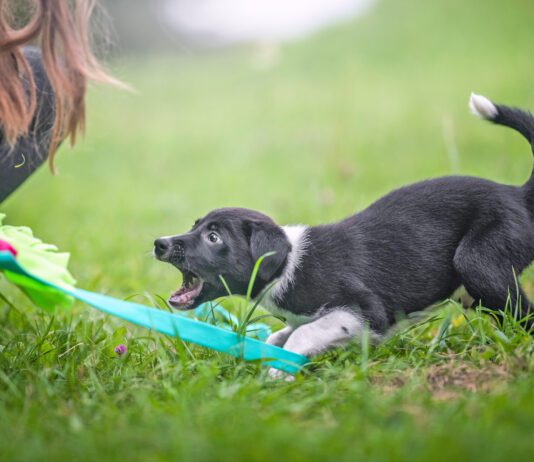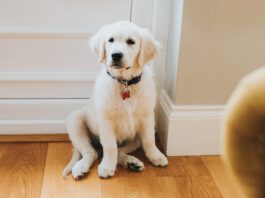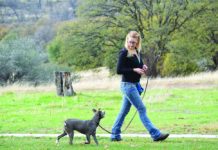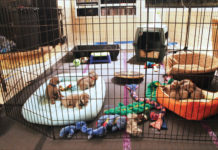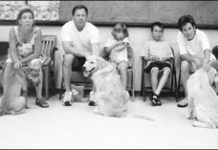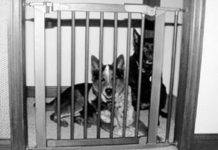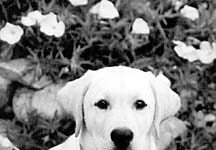The 10 Most Important Things to Teach A Puppy
I don't care what breed or mix of breeds you're talking about, puppies are inarguably, impossibly and adorably cute. You have to be pretty...
Puppy Training Pros and Cons
Last month, I mentioned how concerned my son was when he heard I had made the decision to adopt one of the bully-breed-mix puppies I had been fostering. He's accustomed to me pretending that I don't like puppies (Ew
Best Puppy Collars & Harnesses
Does this collar make me look fat?" This is not a question your dog is likely to ever ask
7 Steps to Leash-Train Your Puppy
Did you know that the best way to teach a puppy to walk politely on a leash is to not use a leash? If you think that sounds like an inscrutable Buddhist koan, fear not - you are not alone. It's far more common to see people either dragging their puppies around, or being dragged around by their puppies, than it is to see a calm, happy puppy trotting along by her owner's side.
Ways to Manage an Adolescent Dog
Is your once cute, cuddly, and well-behaved pup suddenly acting out? Is your dog ignoring you, taking off if he sees something interesting, and chewing on everything in sight? Did his once perfect sit
How To Crate-Train Your Puppy
Most puppies are crate-trained with relative ease. Remember that the crate should be just large enough for your pup to stand up, turn around,...
Optimizing Your Puppy’s Brain
Cute is not the first word you reach for when describing newborn puppies. Born unable to hear or see, with smushed-in faces and twitchy little bodies, they look for all the world like diminutive aliens. Detached and distant visitors from another planet, they are in their own orbit, seeking only warmth, milk, and the rough caress of their mother’s tongue. Nothing, of course, could be further from the truth.
How an Intense Behavior Modification Program Saved One Puppy’s Life
Squid almost didn’t make it to the dog adoption option at the Humane Society of Washington County (HSWC), Maryland. Whole Dog Journal readers who have been with us for a year or more already know part of his story: the eight-week-old Jack Russell Terrier mix was surrendered to our full-service shelter by his owners because they “didn’t have time for him.” What that really meant was that the small white-and-tan pup was a heckuva handful: they couldn’t deal with his incredibly high energy level, fierce puppy play-biting, low tolerance for frustration, lack of impulse control, resource guarding, and sudden, intense aggression when restrained. He easily failed his canine behavior assessment. It’s a good thing he was impossibly cute! We started by identifying all Squid’s inappropriate behaviors and creating a modification plan for each. Some of the pieces overlapped, so it wasn’t quite as daunting as it might appear – but it was still plenty to work on!
How to Train Your Puppy Not to Bite
Contained in every puppy’s mouth is a set of amazingly sharp little daggers known as “teeth.” Puppies explore the world with those mouths. Since you are part of your pup’s world, it is inevitable that those sharp little teeth will at some point come in contact with your tender skin during a behavior known as “puppy biting.” It hurts. So what should you do when your puppy bites you, or other family members (including children)?
Get Your Puppy Enrolled Into Puppy Training School As Early as Possible
The optimum time to start a puppy’s education is as early as possible: about eight weeks of age. With food treats and clickers as the primary tools in our training arsenal, we can help owners start educating their youngsters at an optimum training age, before pups have had several months of reinforcement for unwelcome and inappropriate behaviors. Paradoxically, some veterinarians still counsel owners to wait until their new puppies are six months old and “fully vaccinated” to take them to training class. Unfortunately, this advice is just as outdated as the use of choke chains in puppy classes! It’s true that you shouldn’t wantonly expose your pup to high-risk dog populations; you should never take him to a dog park, or let him play with stray dogs on the street. But the risk of contracting an infectious disease in a controlled setting, with other healthy puppies, is quite low.
Using Baby Gates as Puppy Management Tools
There are lots of other wonderful applications for baby gates in addition to basic puppy management. We have long used one to bar the dogs from our cats’ room (the cats jump over the gate); this keeps the canines from dining on kitty kibble, and prevents them from devouring that grossly delectable dog treat, litter box “kitty rocca.” Gates can also be used to keep a dog out of a baby’s nursery, or out of the bedroom of any family member who is allergic to dog hair. And if your clever Collie has learned that the sofa is off limits when you are there but fair game when you’re away, you can use a gate to block her access to the room with the forbidden furniture.
Preparing For and Training Young Puppies
The first time I saw Buddy he was a tiny tan morsel nestled in his owner's arms, a perfect pudge of a yellow Labrador retriever puppy eight weeks old, fat, round and chunky with a shiny black button nose, warm brown eyes and milk-sweet puppy breath. His owner, Tena, had carried him into my training class to hand him over to me for three weeks of in-home boarding and training.


